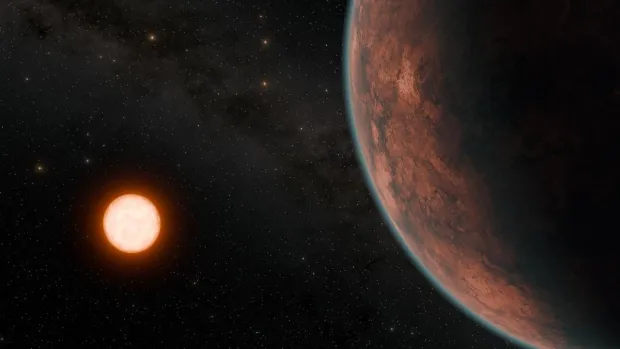Could we have a neighbor? Potentially habitable exoplanet raises hopes for alien life

For centuries, science fiction has entertained us with tales of alien encounters. But is extraterrestrial life just a figment of our imagination? The quest to find life beyond Earth has been a constant source of fascination, pushing us to develop new technologies and explore the furthest reaches of space. The recent discovery of a potentially habitable exoplanet has ignited a spark of excitement in the scientific community, turning those fantastical stories into a tangible possibility and propelling us even further in our cosmic quest.
Located 40 light-years away in the constellation Pisces, Gliese 12 b is a bit smaller than Earth and orbits a red dwarf star –a class of stars known to be relatively cool. With a surface temperature of 107 degrees Fahrenheit (42 degrees Celsius), the planet is warmer than Earth but cooler than many other exoplanets found so far. This temperature raises the tantalizing possibility of liquid water existing on its surface, a crucial ingredient for life as we know it.
However, a potentially habitable temperature isn't the sole factor in determining a planet's suitability for life. The existence of an atmosphere is equally important. Unfortunately, in the case of Gliese 12 b, this remains a question mark. The planet could have an Earth-like atmosphere, a scorching Venusian one, or perhaps none at all.
This uncertainty, however, doesn't diminish the significance of the discovery.
Another factor that makes Gliese 12 b different from other known exoplanets is the nature of its host star. Unlike many red dwarf stars known for their violent stellar flares, Gliese 12 exhibits a calmer temperament. These flares are notorious for stripping away planetary atmospheres, making the possibility of Gliese 12 b retaining an atmosphere more likely.
The researchers noted that our life-giving star, the Sun, was also more active early in its lifetime. Both Earth and Venus are believed to have lost their initial atmospheres, which were later replenished through volcanic activity and bombardment from leftover materials in the solar system.
Today, "the Earth is habitable, but Venus is not … Because Gliese 12 b is between Earth and Venus in temperature, its atmosphere could teach us a lot about the habitability pathways planets take as they develop," Palethorpe noted.
A new hope in the search for extraterrestrial life
Discovered using NASA's Transiting Exoplanet Survey Satellite (TESS), Gliese 12 b belongs to a select group of temperate, Earth-sized exoplanets that are close enough for detailed atmospheric studies. This opens a valuable window to understand the diversity of planetary atmospheres and the factors that influence a world's potential for life.
The discovery of Gliese 12 b serves as a significant milestone in humanity's quest for extraterrestrial life. It raises the hope that other cool stars in the Milky Way - of which an estimated 70 percent are red dwarfs - might harbor temperate planets with the potential for life. Even if the newly discovered planet ultimately proves to be inhospitable, studying it can still provide valuable insights. I
The researchers are optimistic that Gliese 12 b will help scientists understand how a planet's internal structure is influenced by its host star's composition and the environment in which it formed.
"Gliese 12 b represents one of the best targets to study whether Earth-size planets orbiting cool stars can retain their atmospheres, a crucial step to advance our understanding of habitability on planets across our galaxy," said Shishir Dholakia, a doctoral student at the Centre for Astrophysics at the University of Southern Queensland in Australia. Dholakia co-led the research team that made the discovery alongside Larissa Palethorpe, a doctoral student at the University of Edinburgh and University College London.
To date, NASA's exoplanet hunter TESS has found more than 440 confirmed exoplanets. This discovery adds another intriguing entry to the ever-growing catalog of exoplanets, each one a potential stepping stone towards unravelling the cosmic mystery of life beyond Earth.
The team has reported the discovery in the Monthly Notices of the Royal Astronomical Society.










